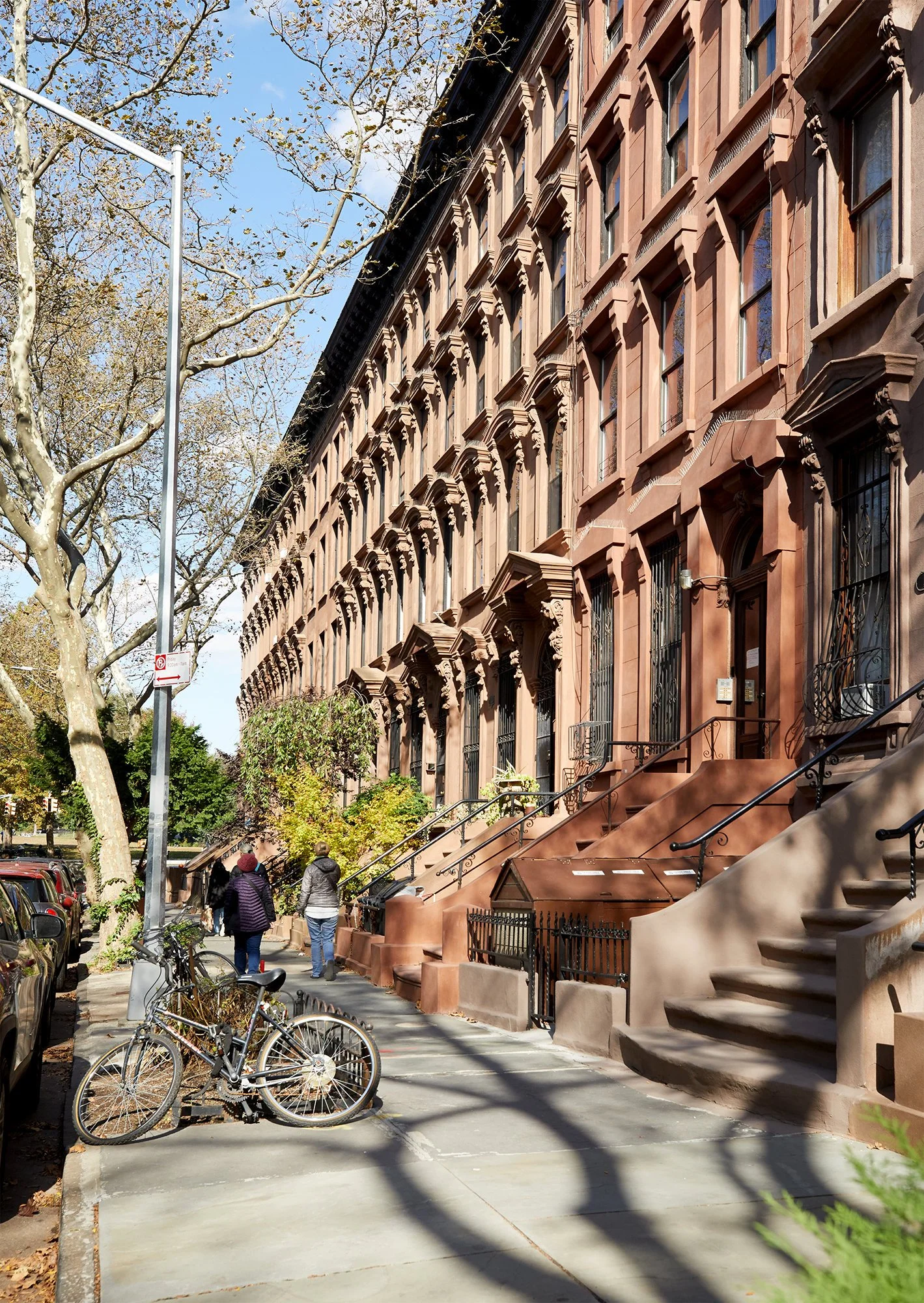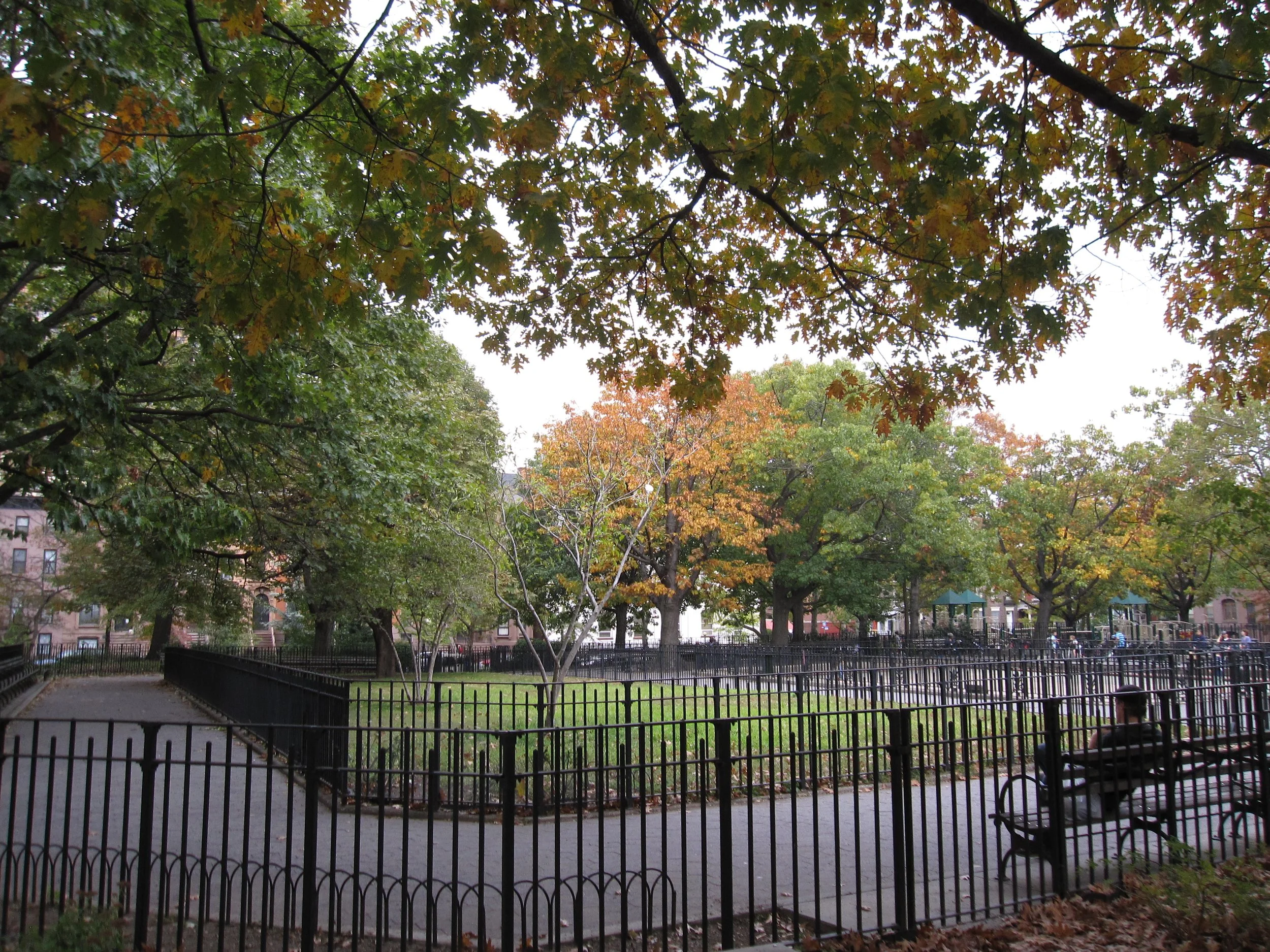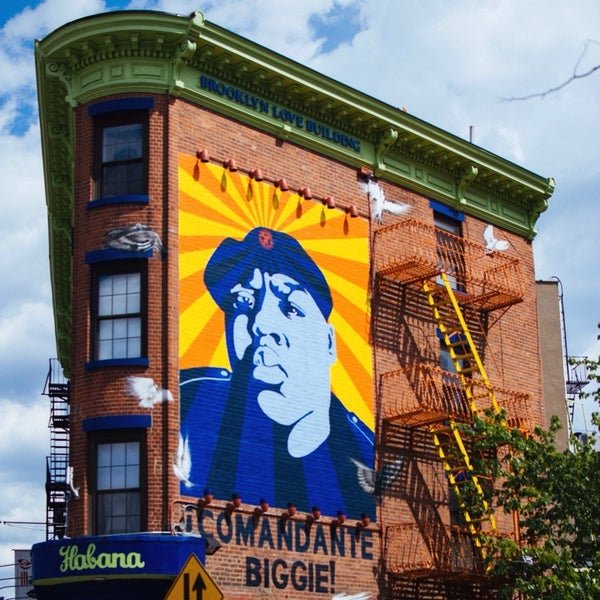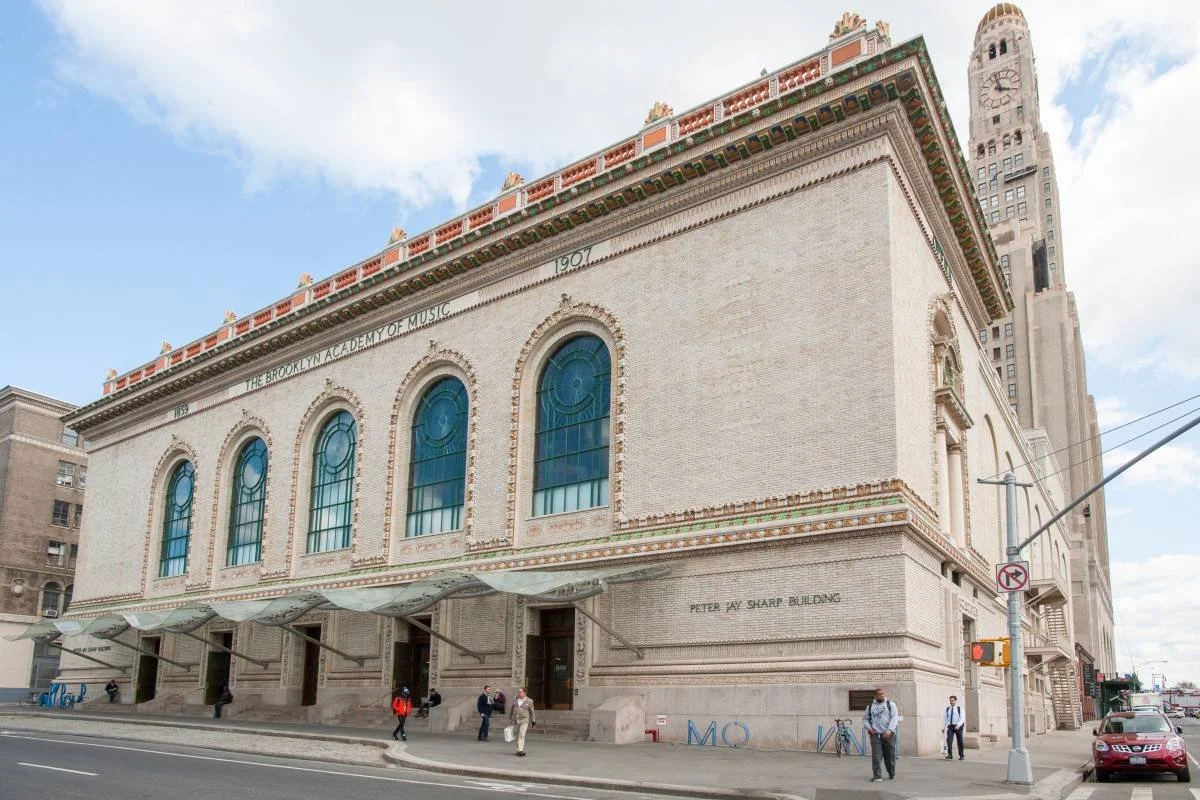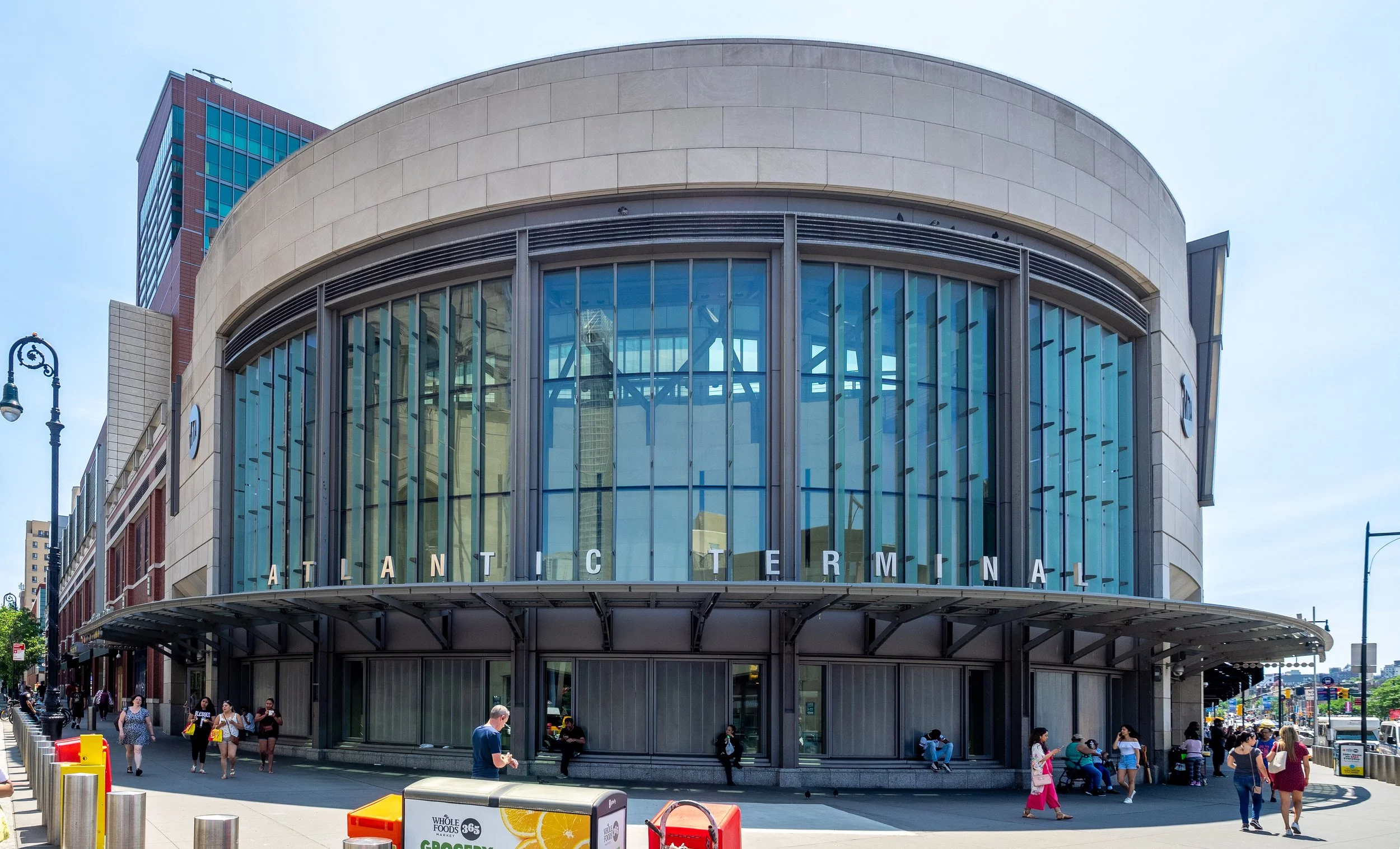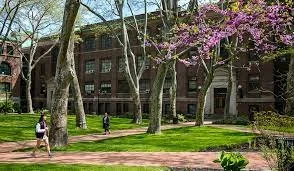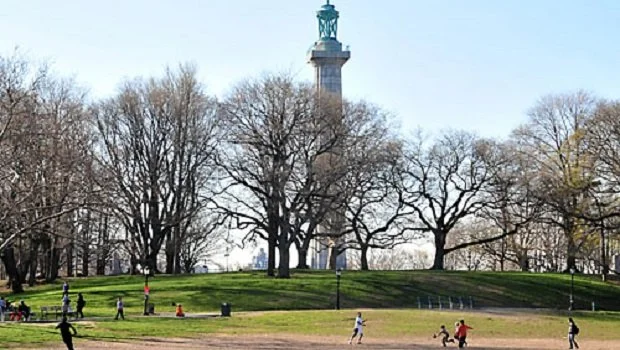Welcome to the Neighborhood!
The many lifestyle choices of Brooklyn are what not only attracts visitors but keeps those there who love to call it home: elegant, family-oriented, and modernistic. Nestled amongst the greenery, remains a cosmopolitan community with its own identity. The lifestyle that one creates is as unique as the individual.
Clinton Hill stretches from Clinton to Classon Avenues, north from Atlantic Avenue to Flushing Avenue and covers the area immediately surrounding Pratt Institute. The neighborhood is often viewed as an extension of nearby Fort Greene, and the tree-lined streets, wide avenues and restored brownstones here are magnificent.
The nearby—and revitalized—Brooklyn Navy Yard has become home to a full-scale movie studio and other commercial and light-industrial interests. Both the exploding popularity of nearby Fort Greene and the new commerce of the Navy Yard have led to the arrival of a fresh crop of trendy bars, cafes and restaurants, some of which line the old Navy Yard docks.
The east side of the neighborhood (toward Bed-Stuyvesant) is the site of new residential developments and more modest older apartment buildings, and the western end (toward Fort Greene) offers a wide range of the historic townhouses in a variety of architectural styles. Amid the renovated brownstones and condominiums, high-end restaurants and shops co-exist peacefully alongside a variety of eateries and laid-back bars. The main commercial strips are Fulton Avenue and Myrtle Avenue, the swanky restaurant strip is Dekalb Avenue all of which lea to Fort Greene Park.
The area is served by the C and G subways (a transfer is required to get to Manhattan on the G line), but the neighborhood's wide, tree-lined streets and avenues are also great for walking or bicycling to all major lines.
Trendy Clinton Hill
Clinton Hill has historically been a wealthy neighborhood with Romanesque mansions, classic Victorian row houses, Italian frame villas and pre-Civil War frame houses lining its streets. It was the highest ground in the area and part of a parcel of land acquired by the Dutch in the 1600s. In 1832, Clinton Avenue was laid out as a tree-lined boulevard along the crest of a hill and named for De Witt Clinton, onetime mayor of the City of New York. And by the 1840s, large homes with lawns, stables and carriage houses had been built. The area was considered a rural retreat until the 1860s, when developers had row houses built, attracting rich professionals. That included oil executive Charles Pratt, who had his mansion built on Clinton Avenue and then built houses for four of his sons in the area.
Pratt’s move influenced other wealthy industrialists to build mansions on Clinton and Washington avenues between 1880 and 1915, including the Pfizers. The first apartment buildings in the area were constructed in the 1900s and during the 1920s and 1930s, they replaced several the mansions. Then in 1954, power broker Robert Moses cleared a five-block area south of Pratt Institute for urban renewal, causing many of the one-family homes to become rooming houses. Many of the neighborhood’s neglected brownstones were restored in the 1970s and a portion of Clinton Hill was designated as a historic district in 1981.
DeWitt Clinton, New York City mayor, governor and senator of New York State, candidate for president (he lost to James Madison) is a name most often associated with the Erie Canal — as well it should be. President Thomas Jefferson had earlier considered the canal idea “a little short of madness,” and many termed it “Clinton‘s Ditch.” But, as governor of New York, Clinton persisted, sponsored it and saw it through; it opened in 1825. But for New Yorkers, especially Brooklynites, his legacy goes beyond that.
The area now called Clinton Hill in his name was originally settled by the Dutch in the 1640s, when they cultivated tobacco plantations near Wallabout Bay. Bedford Corners, just southeast of that area, was incorporated in 1663, as the settlers continued to buy surrounding lands from the native Indians. Situated between Fort Greene and Bedford-Stuyvesant, Clinton Hill is bordered by Vanderbilt Ave. on the west, Classon Ave. on the east, Park Ave. or Flushing Ave. on the north and Fulton St. or Atlantic Ave. on the south, it was the highest ground in the area. It offered great views of the East River and Manhattan and became a fashionable neighborhood for the wealthy after the opening of the Fulton Ferry, which began service in 1814.
In 1832, a tree-lined boulevard was laid out along the crest of a hill and named for DeWitt Clinton, which in turn became the name of the neighborhood. In the 1840s, grand homes with lawns and stables were built and the area was still considered a rural retreat until the 1860s when developers began building row houses. One of its most famous residents was oil executive and philanthropist Charles Pratt who in 1875 chose Clinton Ave. as the site for his mansion — then built four more houses for hissons. Many other wealthy industrialists followed his example. He gave his name to the Pratt Institute, which today occupies 25 acres of Clinton Hill.
Soak Up the Culture
Fabulous Fort Greene
Rows of stately brownstones—including a wealth of lovingly-restored mid-19th century Italianate and Eastlake architecture—line the quiet, tree-lined streets in Fort Greene, the neighborhood immediately east of Downtown Brooklyn. Fort Greene was a well-off neighborhood in the late 19th century. It caught the attention of wealthy homebuyers once again in the 1980s, and the housing booms of the 1990s and early 2000s saw the influx of many new residents and businesses.
The residents of Fort Greene are a healthy combination of artists, students, professionals and families; all of whom love the vast green spaces of Fort Greene Park. The neighborhood is also home to several important cultural institutions including the Brooklyn Academy of Music, host to film, music, and numerous other world-class cultural events. Brooklyn Technical High School is one of New York City's most competitive public schools, and The Pratt Institute in neighboring Clinton Hill is one of the nation's leading art schools. DeKalb and Myrtle Avenues are the main thoroughfares offering plentiful shopping and dining, and in the spring and summer you can stroll past or visit the area's many outdoor cafés. Brooklyn Flea, a market featuring local vendors, is the latest addition to Fort Greene's many attractions.
For a brief time in the 1970s, Fort Greene seemed to be losing residents and businesses, but the community worked to make public housing a success and brownstone enthusiasts moved in to renovate and resettle. In the 1990’s there was a resurgence of community revitalization which saw families, new business investments and real estate renovations bring Fort Greene and Clinton Hill to a thriving and highly desirable area within the five boroughs of New York City.
The monument stands as a grave to over 11,000 prisoners who died in British prison ships in nearby Wallabout Bay. The park itself, once called Washington Park, was established in 1848 and adopted its neighborhood nickname after colonial general Nathanael Greene in 1897. Greene supervised the construction of Fort Putnam, which survived the Battle of Brooklyn but was abandoned during General George Washington’s retreat across the East River. During World War II, more than 71,000 navy personnel and civilians worked at the navy yard and in 1944, the New York City Housing Authority built the Walt Whitman and Raymond V. Ingersoll Houses to house the wartime workforce.
How Fort Greene got it’s Name
When Gen. George Washington prepared for the British attack in 1776, Gen. Nathanael Greene, “The Fighting Quaker” from Rhode Island, was put in command of the troops on Long Island. He supervised the building of Fort Putnam, named for Col. Rufus, on the hills overlooking Wallabout Bay. Illness prevented Greene from taking part in the Battle of Brooklyn, but he would go on to distinguish himself in the war’s Southern campaign in the Carolinas. Fort Putnam, abandoned during the retreat of Washington’s army from Brooklyn, was repaired in advance of an expected British attack in 1812 and a garrison was stationed there until 1815. The fort was then renamed for Gen. Greene.
In 1801 the U.S. government purchased land on Wallabout Bay for construction of the Brooklyn Navy Yard on the northern border of the neighborhood, which was then known as The Hill, and was home to several large farms, including that of shipbuilder John Jackson, who had also created a burial ground on his property for the remains of those who died on British prison ships in the Revolutionary War. Brooklyn’s first park, then called Washington Park, was established in 1848 around the site of the old fort. It became Fort Greene Park in 1897, after it was redesigned by Frederick Law Olmsted and Calvert Vaux of Central Park fame.
Download the Brochure
See the full history of the Fort Greene & Clinton Hill neighborhoods with extensive local recommendations and cultural details. Whether you’re looking for dinner, coffee, shopping, wine shops or farmer’s markets, you’ll find it here. We also give Brooklyn transportation advice, libraries, pharmacies and entertainment. Get the most out of your Brooklyn visit to Fort Greene and Clinton Hill!
Follow Local Happenings and Availability
